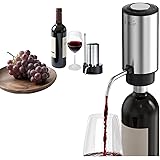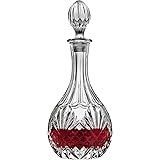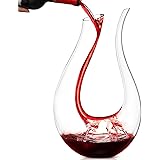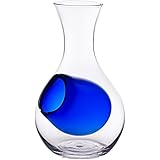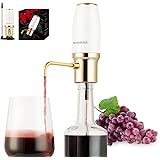Elevating Your Everyday: The Art of Table Wines and Expert Food Pairing
With an alcohol content typically capped at 14% by volume in the United States, table wines are truly foundational. They are the daily companions to countless meals. The video above offers a fantastic introduction. But let us delve deeper into these essential vinous offerings. We will explore their characteristics. We will also master the nuanced art of expert food and wine pairing.
Decoding Table Wines: Beyond the Basics
Table wines are often called still wines. This means no bubbles are present. They are not like sparkling wines. These wines are crafted for regular consumption. They offer approachability and versatility. Their lower alcohol content makes them ideal for meals. They enhance, rather than overpower, your culinary experience. Imagine a perfectly balanced meal. The wine complements every bite. This is the essence of table wine enjoyment.
The vinification process for still wines is meticulous. Grapes are harvested. They are then pressed. Fermentation converts grape sugars to alcohol. The wine then ages. It rests in tanks or barrels. This process defines its final character. The goal is a wine that expresses its terroir. It should be ready for your table.
Red Wine: Structure and Depth
Red wines originate from red or black grapes. The skins macerate with the juice. This imparts color, flavor, and crucial tannins. Tannins are polyphenols. They create a drying sensation. They bind with proteins in your mouth. This interaction is key for pairing. Think of a rich, fatty dish. Tannins cut through the richness. They cleanse the palate effectively.
Famous red grape varieties offer diverse profiles:
- Cabernet Sauvignon: This grape is robust. It features notes of blackcurrant, cedar, and tobacco. Its firm tannins demand substantial fare.
- Merlot: Softer than Cab Sauv. It offers plum, cherry, and chocolate notes. Its gentler tannins are more versatile.
- Pinot Noir: Delicate and aromatic. Expect red cherry, cranberry, and earthy undertones. It has high acidity and soft tannins.
- Syrah/Shiraz: Bold and spicy. It delivers dark fruit, black pepper, and smoky nuances. This wine can be quite intense.
Imagine pairing a powerful Cabernet Sauvignon. It sits beside a marbled Wagyu steak. The wine’s tannins cut through the fat. This enhances the beef’s umami. Or consider a rustic Bolognese pasta. A vibrant Sangiovese would complement its acidity. This creates a harmonious flavor profile.
White Wine: Zest and Elegance
White wines are primarily from white grapes. Their skins are separated quickly. This avoids color extraction. Acidity is a hallmark of white wines. It provides a refreshing crispness. It balances the richness of many dishes.
Key white grape varieties include:
- Chardonnay: It is highly adaptable. It can be oaked or unoaked. Oaked versions boast butter, vanilla, and toast. Unoaked types offer apple, citrus, and minerality.
- Sauvignon Blanc: Characterized by its vibrant acidity. It has notes of grapefruit, passionfruit, and sometimes herbaceousness.
- Riesling: Aromatic and versatile. It ranges from bone dry to lusciously sweet. It often displays petrol, lime, and floral aromas.
- Pinot Grigio/Gris: Crisp and light-bodied. It presents flavors of green apple, pear, and subtle almond.
Envision a pan-seared halibut. Its delicate flavor shines with a crisp Sauvignon Blanc. The wine’s acidity cuts through any butter. It brightens the fish’s natural sweetness. A roasted chicken would thrive. An oaked Chardonnay offers richness. It matches the savory poultry beautifully.
Rosé Wine: The Best of Both Worlds
Rosé, or pink wine, holds a unique position. It is made from black or red grapes. However, skin contact is brief. This results in its distinctive pink hue. Alternatively, some Rosés blend white and red wines. This creates a wine with characteristics from both. It offers red fruit notes. It also has a crisp acidity. Rosé styles range from dry and savory to subtly sweet.
Production methods vary. The “saignée” method bleeds off juice. This juice ferments separately. The “direct press” method presses grapes gently. Minimal skin contact occurs. Provençal Rosés, for example, are known for their pale color. They have delicate strawberry and citrus notes. Tavel Rosés are bolder. They offer more structure and depth.
Imagine a warm evening. Grilled prawns pair with a dry Provençal Rosé. Its freshness complements the seafood. Its subtle fruit echoes the smoky flavors. A vibrant Rosé also elevates a summer salad. Its acidity invigorates light dressings. It offers a bridge between varied ingredients.
Advanced Food and Wine Pairing Principles
General suggestions are helpful. However, true mastery requires deeper understanding. A sommelier considers several elements. They balance the food with the wine. These principles guide expert choices:
- Match Weight and Body: Pair light-bodied wines with delicate foods. Robust, full-bodied wines complement heavy, rich dishes. A delicate Pinot Noir could be overwhelmed. A hearty beef stew would overpower it.
- Acidity is Your Friend: A wine’s acidity should be higher than the food’s. High-acid wines cut through richness. They cleanse the palate effectively. Imagine a rich cream sauce. A zesty white wine slices right through it.
- Sweetness Rules: The wine must always be sweeter than the food. Otherwise, the wine will taste sour. A sweet dessert needs an even sweeter wine.
- Tannins and Fat: Tannins love fat and protein. They bind to them. This softens the wine’s astringency. It makes the food taste less greasy. This creates a pleasing sensation.
- Complement or Contrast: Sometimes, similar flavors enhance each other. A mushroom dish and an earthy Pinot Noir is an example. Other times, contrasting flavors excite. Think salty cheese with a sweet Port.
- Salt’s Magic Touch: Salt in food enhances fruitiness in wine. It softens tannins. This makes for a more pleasant pairing.
- Spice Challenges: Spicy foods generally demand low-alcohol, fruity, off-dry wines. Alcohol intensifies chili heat. Avoid high-tannin wines with spice.
The journey into table wines is fascinating. It is also deeply rewarding. These everyday selections are fundamental. They open doors to culinary delight. The video provided an excellent starting point. Now, we expand on these concepts. You can confidently approach your next meal. Choose the perfect food and wine pairing. Experimentation remains paramount. Trust your palate always. Record your discoveries in a wine journal. This journey of exploration is endless. Enjoy discovering the exquisite nuances of table wines.


